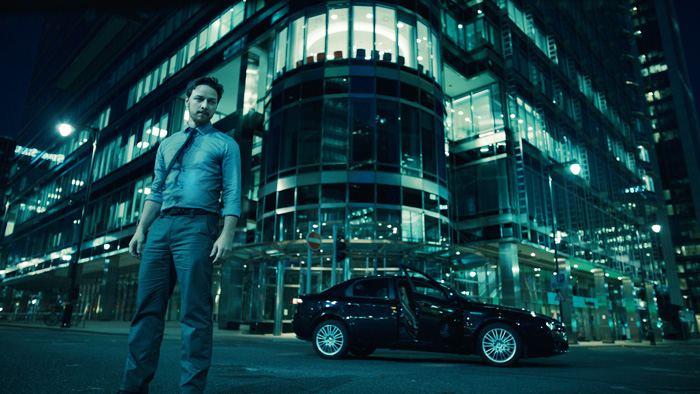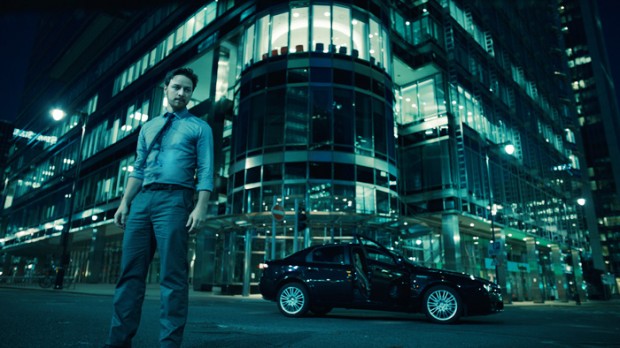
Welcome to the Punch is a thrilling story full of deception, corruption, and action. Starring James McAvoy and Mark Strong in a game of cops and robbers, respectively, this is writer/director Eran Creevy‘s sophomore effort and his biggest film yet. Sporting an incredibly strong supporting cast and realistic gunfights, this is a throwback with a modern twist and plenty of personality to boot. Creevy never speaks down to the audience, and we pick up in the middle of the story and character’s lives.
Earlier this week I had the chance to speak to the high-riding Creevy as he made he way back home on a boat on the River Thames. We talked about how much getting on the 2010 Brit List for screenplays helped him get the film made, whether he made any changes to that script between then and now, the opportunity to cast McAvoy and known actors in key roles, and what he took from working with major directors as he came up. We even got the scoop on what kind of budget he was working with, the length of the shoot, and much more. Enjoy.
The Film Stage: This film was number three on the 2010 Brit List and had a lot of buzz around it at the time. Did you feel like that directly helped you in getting this film made? I mean, it took a couple of years.
Eran Creevy: Yeah, I think so. What happened was I made a very low-budget film for my first, Shifty. Cost a hundred grand. I got nominated for a BAFTA for it. I got asked what I wanted to do next and I just didn’t want to do another kitchen-sink socio-realist drama. I wanted to do something that hearkened back to to heroic bloodshed era with John Woo and The Killer and that period of time. Those kinds of cop movies in the late ’80s and early ’90s that I used to love. Set in Hong Kong and that type of action-orientated cinema. So I set about writing the script.
I think the Brit List helped. Having been nominated for a BAFTA probably helped me get on the Brit List, and helped get the script in front of agents. Then we just set about getting the film made. I think the toughest thing about getting this film made was that I was a hundred grand filmmaker. That’s why we got on board someone like Ridley Scott who came aboard as the executive producer and he helped give the project traction to get it made.
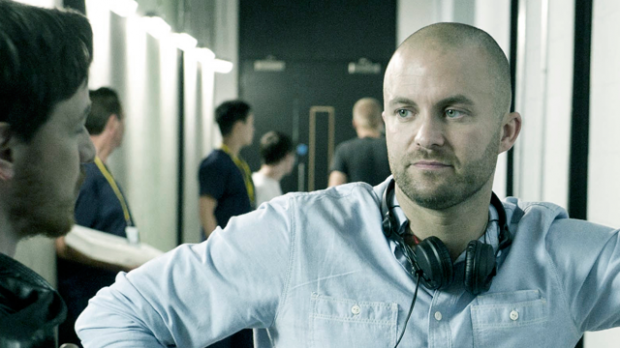
The time period from getting on the Brit List to having a finished film is pretty long. When you started on production with this film, did you go back and rework the script or is what you had been nominated for what you ended up shooting?
The script that is on the Brit List is very different from the one that was shot, I think. We continued to develop it over the next year or so. Continually redrafting. Even moreso when Ridley Scott came on board as an executive producer. We would sit down with him and go over the script. The draft from the one that was on the Brit List to the one that got shot is very different. A much leaner, faster moving screenplay.
When we meet a lot of these characters, we’re dropped into the middle of their lives. This is a popular thing now, treating the audience like they have a brain and can catch up. Did you mess with that formula a little? Did you have more backstory beforehand or was it always setup to drop in?
I think it was pretty much set to drop in. For every single character I sketched out their history and where they had come from, where they were born, where they were going. What had made them the people that they were today. What incidents had happened to make them who they are. Each actor was given a three to four page backstory for their role in order to make their characters more three-dimensional. There was a little bit more backstory in the film with the Jacob Sternwood character played by Mark Strong. A little bit more history to who his wife was. How his relationship with his son had become so estranged.
He was suffering from continual panic attacks in the film. We actually shot those panic attacks. I ended up cutting them out. They were panic attacks that started once his wife had died. There was this monologue that he gave and you didn’t know exactly why. His wife had been found at the bottom of a ravine, dead. He didn’t know whether she had committed suicide or had fallen, and ever since she had died his son blamed him for the death of his mother. He had left home and gone back to London. That’s how their relationship had become so estranged. That stuff was in there but I decided to take it out the same way in the screenplay I had taken out a lot of the back history on James McAvoy’s character. We never shot that stuff but there was a lot of story about why he had become the cop that he was. Why he was so determined to track down Jacob because of what had happened in his own life. His father was a police officer. But I felt the movie needed to move fast and quickly to a degree, and it was about the immediate. It wasn’t about the past. So I hoped the audience would realize these characters are three-dimensional without having to spoon feed them what their history was and hope the actors could portray that as well as they could.
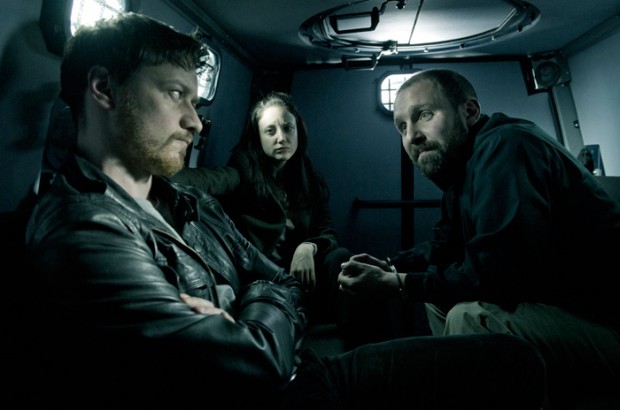
I think you do a good job of that. There’s a realism to the gunfights and shootouts and in particular with how the characters interact with their weapons as well. I’m curious how much research and how much detail you went in to or did you have someone on set that was you could bounce things off of?
Yeah, I had someone on set. We had a gun specialist. We had a political advisor. For every element, we had someone that could advise on set and be there for the actors to talk to. With this film, because it was a specific part of a genre, rather than try and make something that was massively realistic. The thing was that I studied the police work and politics. I looked at the conspiracy. I talked to the political advisor. I asked if whether this conspiracy could actually happen and the political advisor said to me, “Yeah, I wouldn’t be surprised if something like this hasn’t actually happened.” But to me I was more fundamentally interested in these two men going against one another. It was more about the style of the movies that I was homaging like the John Woo and Infernal Affairs. Though I did a lot of research on the script, when it came to making it it was more about just showing the actors the style of films I was inspired by.
This is your sophomore effort, and you have Ridley Scott along with McAvoy and Strong. Even your secondary cast members are peppered with people that I recognize. I’m curious when you started going after these kinds of actors. Was it Ridley that helped you get that cache?
I think so. Ridley gave us a lot of cache and helped originally get Mark Strong, who was the first person to come on board. He had worked with Ridley Scott on Robin Hood and Body of Lies. Because of Mark Strong, then James McAvoy came on board. Often it comes to a point where you offer [a role] to an actor and you say, “Who would be perfect for this role?” You say, “Well, Peter Mullan would be great in that role” or “It would be amazing to offer it to Andrea Riseborough.” But often you don’t have time to get those people into the role and you go on down your list. But I think because someone like Andrea Riseborough was so keen to work with James McAvoy because she respects him as an actor and she knew that Ridley Scott was on board. So we offered it to her and she took the part. I think she was coming off of a film called Shadow Dancer. She was quite keen to have more of a relaxed time on set and she wasn’t number one on the call sheet.
I think it just came down from the top. Once Mark Strong and James McAvoy had come on board, and they knew Ridley Scott was attached as executive producer, then you pick up people like David Morrissey and Peter Mullan and Johnny Harris. But it’s also that thing about being nervous about casting perhaps well-known British actors as well. Like with Andrea Riseborough, I was very concerned because on paper her part was fine. She was never meant to be a huge part in the film. But suddenly if you put Andrea Riseborough into that role, people expect a lot more. But then I also thought, “Well, then the best way to play it is against type because they won’t expect things.” But I was nervous. Was she too well-known for this part? There has been a few of you that have said that it’s a shame Andrea Riseborough [isn’t a bigger part]. But that was always the intention.
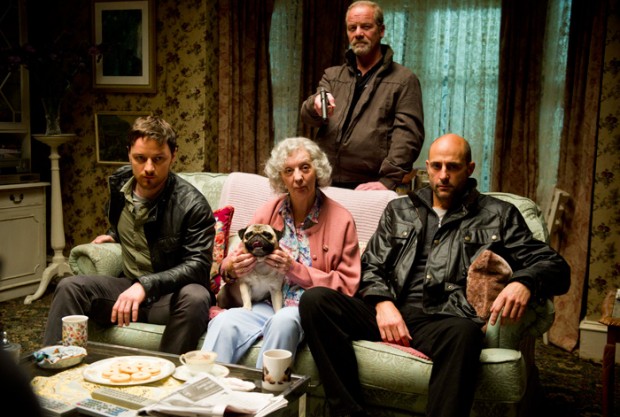
Having this as your sophomore film, I feel like you would have internal pressure in cutting your shoot time short because of how big these names are. How long was the shoot?
It was a seven week shoot. It was a very quick shoot for that style of film. We shot an entire film in seven weeks and they’d shoot an entire car chase sequence in Skyfall in six weeks.
[Both laugh]
So you are working. For this shoot and our budget, which was a 5.2 million pound budget, you’re still working in constraints and trying to figure out how you make things bigger and better for the budget. Like the opening heist sequence, which had to be shot within two days. You have to figure out how you shoot something like that but also make it look beautiful and try to compete with bigger movies out there. Which are going to be costing a hundred million and you costing five. You’re trying to figure out how to compete with them. Make it feel aspirational but yet make it make sense. [Laughs]. In many ways you’re using your same skillset that I used with Shifty and trying to make a hundred grand movie and make that look like it cost a million. Here you’re taking five million and trying to make it look like it cost 25-30 million. You’re always trying to push the boundaries. So it’s hard. But I learned a lot as a filmmaker and how to shoot action. I learned from the mistakes I made and how I can apply those to films I make in the future. Especially for my next film.
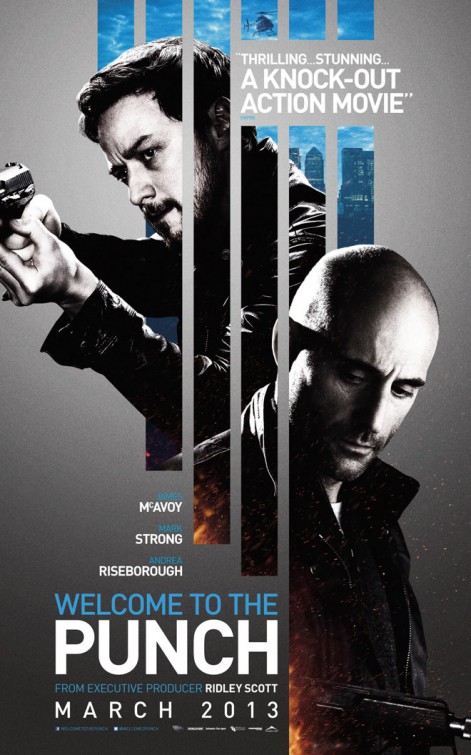 You’ve worked with a couple of other fairly well-known directors. I’m curious whether you took anything from them and applied it to this film? That’s an obvious question, but do you recall any of those moments or did you internalize all of it?
You’ve worked with a couple of other fairly well-known directors. I’m curious whether you took anything from them and applied it to this film? That’s an obvious question, but do you recall any of those moments or did you internalize all of it?
Not every movie I’ve worked on was significant. I know on IMDB, I would go on set for two weeks and it wouldn’t always appear on there. So I worked on Alexander with Oliver Stone. I worked on Charlie and the Chocolate Factory for like two months on the Oompa Loompa unit, so I saw people like Tim Burton work. I worked on a Woody Allen set. I worked on the Bridget Jone’s Diary sequel made over here. I worked on Breaking and Entering with Anthony Minghella. I think the thing I learned as a filmmaker was I always scared of making that leap. Jumping off into the unknown and making a movie. The thing I took from [those experiences] with Woody Allen, Tim Burton, and Oliver Stone was that in many ways they’re just flesh and blood. You see them winging it and figuring it out on set. Trying to make it work. They haven’t always got all the answers. They’re collaborating. And they’re human—they’re just trying to make the best movie the best they can. I still do hold those filmmakers up in high regard. But you sort of think of them as mythological gods. But when you’re on set, you see them as human beings and they’re just figuring out like you are. To see Woody Allen in his 60s and not having all the answers. Not quite certain what to do there or here. You say, “Well, if he’s still kind of figuring it out and winging it in his 60s, then surely I can make that jump.” That’s what you learn. He’s just human: flesh and blood. As long as you’ve got conviction, energy, and commitment, then you’ve just got to go for it.
Welcome to the Punch is now on VOD and in limited release.

